This portfolio is meant to communicate my creative journey, which has been highly influenced by my spiritual journey and pilgrimages. These sacred travels and voyages have pervaded my point of view and these various works. I am increasingly inspired by the intersections of religion, spirituality, art, design and ecology, as well as the artist and creatives who also embraced this knowledge. Using writing, research, video and sculpture I've sought to materialize divine influence and inspirations into the physical realm.Francis Rouge
Don't wanna be here? Send us removal request.
Text
On Mondrian, Yves Saint Laurent and theosophy in art and design.

This is a small write up excerpt from a new publication
"On Aesthetics and Spirituality"
There have been many things written about designer Yves Saint Laurent. Never have they reached further into talking about his work as it relates to the fourth dimension. Because of this Saint Laurent transcends the legacy of being just a fashion designer. Now this won't get into the "Cult of Saint Laurent" and the fashion devotees in it for the pure sake of aesthetics. But the understanding of intention in art and the artist quest to manifest in the physical, a divine channeling of inspirations and philosophy.
Many famous artists of the 20th century relied heavy on their faith and spiritual beliefs to create works of art that continue to awe and inspire us today. Whether they spoke openly or candidly about it or not. This can be seen in the works and philosophies of painter Piet Mondrian.

Mondrian spoke very openly about his beliefs in theosophy. His art contained ideas of utopia. Mondrian was searching for values and aesthetics that are rooted in the universal. Here enters elementalism. In 1914 the artist proclaimed "Art is higher than reality and has no direct relation to reality. To approach the spiritual in art, one will make as little use as possible of reality, because reality is opposed to the spiritual."

Cut from 1914 to 1965 when an evolving designer Yves would go on to draw influence from the designer and channel his prints into wearable well couture'd works of art. Yves was wanting to experiment with the modern looks of the time. But he could have used any artist works to translate into his own. Warhol was having his big break as an artist at the time and many of his screenprints would become great graphics for shirts, totes, socks, etc. Perhaps Saint Laurent identified with those philosophies behind the works of Mondrian. I'm a believer that all art comes from a spiritual space and we are all channelers of that. But if we look at it, while Warhol may have been modern as much as Mondrian, one was making somewhat social commentary on western society and culture, within the social and political shake ups of the time. While the other was attempting to reconcile his painting with his spiritual pursuits. By 1913 Mondrian began to intersect his art and his theosophical studies. From this he would develop theory cementing his departure from representational painting.

So now that backstory of Mondrian and the 1965 collection have been illustrated. What makes Yves Saint Laurent or his work that of a mystic? While I believe art comes from a spiritual source, there is that manifested from the external. We know that external success out weights so much, especially in the western world. It's common teaching in the West, to only strive for what they can gain in the material. Mysticism died in the everyday died somewhere in the lines of history. Internal pursuits can indeed reap material rewards, they just often come with the trials and tribulations of uncertainty, faith and perseverance. This all requires a large amount of patience and alignment. When you stand in front of a Mondrian, you can feel that journey of one's spirit to reach that place of divinity and inspiration where everything throughout the course of a lifetime, or lifetimes, clicks. That's what would happen to Yves during 65'. After his departure from Dior (Note: Dior was said to have tarot card readings before the start of ever collection showing, was Yves aware of these readings?) Yves had begun his own house, though it was the collection of 65' that would solidify his further rise and become a historic moment for the house of YSL, and modern art. Mondrian would be one of the only direct references to the fourth dimension Yves would reference openly. I believe the rest of his works simply came from a spiritual draw of inspirations. It's not much of a secret the Yves had a changeling life outside his career as an artist. Yet he continued to work into his 60s with works that would be one of a kind, timeless and transcend the average fashion ready to be consumed and discarded. While Saint Laurent was not open about his religious or spiritual beliefs, it is at least known that he believed in luck, as well as collected a Buddha statue as a main peace for his home at a time when most westerners were very suspect of anything outside the scope of western religion. Yves was brought up catholic and even baring the name of a well-known martyr turned saint named St. Lawrence. (He also had a catholic funeral in France at his death).

The Divinity that came with the work of Saint Laurent and the art of couture is rooted in intention and the belief in the higher power of art. Perhaps even the ability of a Seerer, or strong intuition using the gift to foresee and shape new designs within fashion. The belief doesn't have to be as blatant as that of the old masters and their religious depictions but can be felt through the artist personal style, vison and intention. While Laurents legacy is often praised for empowering women during a time of heightened fights for gender equality, anyone can be transformed by the garments. It was also a time of great gender fluidity and deconstruction. The feeling of simply wearing a Saint Laurent design feels otherworldly and empowering for all those adorned in them. Many other brands and designers would follow in the years since Saint Laurent made his impact on 20th century art and fashion. Some of them would go on to break the 3rd dimension into fashion as an art and few would break the 4th dimension of fashion into an ethereal tool for universal and divine expression. For anyone part of the "Cult of Saint Laurent" there is a deep awareness of one thing for certain, "they aren't just clothes".
~Francis Rouge
1 note
·
View note
Text
Sun Cathedral: A place of pilgrimage sculpture for design project


1 note
·
View note
Text
On Land, Aesthetics and Spirituality: The Fourth Dimension in Land Art.
I’ve heard it among various groups and circles of people throughout life. Aesthetics are for the vain, a tool for capitalist and completely outside the realm of what is sacred. I remember being on a team one day, we were talking about trees. There are many characteristics that make a tree What it is. What makes a tree, was the questions I stated, “aesthetics” now my team members who were educated in the field of science sorta laughed and replied “vibes” even though I Wasn't fully aware of what I was saying I replied, “Aesthetics are more than just vibes” It went silent, and we returned to work. Only I would spend days later thinking about what aesthetics were if not vibes. I had to ponder the question up until the second day of lent when I found myself at a church among a group of artists whose faith had also been a motivation or entangled with their practice. The priest at the church gave a presentation on aesthetics, in which they explained “God’s use of beauty is meant to call us home.” This being the reason why a sunset or sunrise over mountains and oceans bring a sense of awe whenever we witness them. Many artists throughout history were also responding to a higher, spiritual call in their works. much as the works of Piet Mondrian, Mark Rothko, Richard Serra, Robert Smithson and many others. Modern Art and Spirituality Ironically enough I had been doing intensive research into Mondrian’s work after overlooking it for so long as just being “cool” paintings. During the presentation a slide came up with one of Mondrian’s paintings! It wasn’t a coincidence considering Mondrian was very known to channel the divine in his work. To quote this wiki article on the matter or De Stijl and Neoplasticism:
“The Dutch neo-plasticists, imbued with Calvinism and Theosophy preferred the universal over the individual, the spiritual over the natural, the abstract over the real, the non-figurative over the figurative, the intuitive over the rational; all of which were summarized by Mondrian as the superiority of pure plastic over the plastic The neo-plasticists of De Stijl expressed their vision (plastic) in terms of 'pure' elements, not found in nature: straight lines, right angles, primary colors and precise relationships. This disassociation from nature created a new art, whose essential qualities were spiritual, entirely abstract, and rational
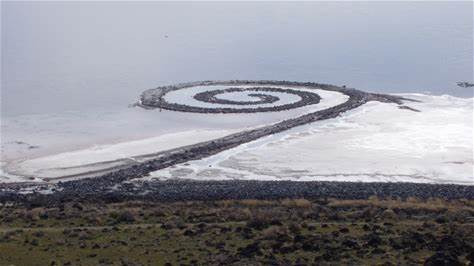
”Robert Smithson “Spiral Jetty”
At first glance I don’t think many people would associate Smithsons work with anything theoretically spiritual. Always framed as “earthworks” He had a career prior to sculpting that would explore themes of death and hints towards his religious upbringing. Learning more about Smithson the persona and the Artist, works such as “spiral Jetty” cannot be detached from their spiritual influences. Rather one as devout as Mondrian or Existential as Smithson, Artist and Art are often the physical manifestation of our inner world, our light, our darkness and divine connections.
So, what is beauty if not just vibes? It is a source for inspiration,
not just of how we build and manifest our physical world
but the spiritual as well. Beauty draws us closer to home,
that home being the part of us that is infinite.
~Francis R.
2 notes
·
View notes
Text
Paris, Texas Revisited: The Pedestrian on film.
Landscapes and psychogeography in cinema
After a recent review of Wim Wenders early 1980s film “Paris, Texas” Starring Harry Dean Stanton I was able to have some new realizations of the film. When I started to dive into landscapes and how they are captured in cinema, “Paris, Texas” was always coming to mind. I knew I would have to revisit the film eventually. I didn’t think I would rediscover it in a way that makes so much sense to everything I have been theorizing about landscapes, film and the art of psychogeography. Paris, Texas follows Travis Henderson as he wanders. There is more to the film, but I recommend watching it and if you have, I will point out the wander’s perspective of the story.
We follow Travis through the landscapes of west Texas and all the way to California making it to Los Angeles and Later back to Texas and off to Houston. As we move throughout the many landscapes there is also the presence of the automobile, although we, the audience get a great feel for the land as the story is moved along by Travis who spends much of the film on foot taking, the viewers on for the journey. Travis is a pedestrian, refusing to fly from Texas to California and would have possibly done the walk if his brother had not stopped him. Once he reaches Los Angeles, a city where the driver is the main character, he remains a pedestrian. There is one scene where Travis is reunited with his 7-year-old son who is almost 8. He offers to walk his son home from school. His son, who hasn’t seen him in years, protests this ideal. It is somewhat unclear if his son is anxious about being seen with his long-lost dad, who doesn’t look like the most conventional person in the world, or if he doesn’t want to walk home because in his words “Nobody walks”. At only 8 he has come to understand that walking is not the idea form of travel in a city designed around the automobile at this point in its history. But Travis continues to defy the ways of the land and in brief moments gives us a glimpse at Los Angeles that can only be admired by the pedestrian. The beauty that is lost in translation when one is sitting in the driver’s seat and even passengers. The film highlights these relationships between those who walk and those whose life revolves around planes and cars and the need to reach every point fast. There is a difference in how each operates and the way they are influenced to move. The pedestrian, while seen socially as less free and in control of their journey, has a freedom that is often prescribed only to those who drive. They can go where they want and keep the destination in mind and that becomes liberating. To go with no distraction and no deadline.






0 notes
Text
Death of the pedestrian
by Francis Rouge
The automobile has defined our landscapes and the way we move through the physical world. Take in the United States, and yes that includes the Northeastern part of the country which many believe to have the most efficient transit in the country. To some degree this is true! Cities such as New York, Boston, Philadelphia and so forth. These places do have better transit than let's say some cities in the Midwest such as Detroit. Though if this is the case why are more New Yorkers driving than ever before? And why is there more congestion on the road that the city of Manhattan has had to consider adding a higher cost just to slow people from driving on to the Island? Well for one thing the infrastructure that is in place could be a lot better than it already is. Less funding has been going to newer transit systems and not being funneled into maintaining the ones that are already in existence. Much of the funding goes to the roads and this creates the cycle of more people buying cars and more space being given to cars. Cars, Cars, Cars. They are in many ways our "Third place" (sometimes they are our first and second place as well depending on how much time we actually spend driving and sitting in traffic) and regardless of current conversations around infrastructure, third places and walkability most people are complacent in our current design and state of being.
In order to have systemic change we must first re-evaluate our identity. As people especially those of us residing in countries of economic influence and growth of any kind we can be sure that we are among the most wasteful, because we have the most things to dispose of. We don't really need to dispose of things and be as wasteful as we are however, when you have grown up always being able to go to the store and access fruits or turn on a facet and not worry so much about the water not being clean it is easy to become comfortable or worse, entitled. We all are very much entitled to food and water however we often times use more than we should with no thoughts of how it has a collective effect on us all. Because this is a piece about driving, I have to mention how this relates to our overuse of fossil fuels. We fly and drive short distances fueling the need for oil companies to drill more and so the cycle continues. Not only should we have collectively moved towards more sustainable solutions for our utilities long ago, but we are also still not mindful of the fact that we haven't scaled back on our use of fossil fuels, and this goes beyond driving and flying but those two are also a part of the mix! Still, it often goes back to our identity and how we see ourselves. If we are drivers and our cars are like second homes or our dream and for some their "baby"? than why scale back on our use of the automobile? I mean riding the bus isn't as chic and with more delays and closures of rail systems driving is easier, faster, comfortable, a symbol affluence and overall better.
to be continued.
0 notes
Text
Death of the Pedestrian
Many great things have come with the invention of the car or any form of transit, planes, trains and the automobile has allowed us to move in a more efficient and fast way. So much so that we as a collective began to craft our identities around what we drive, how we drive, where we drive and when. The driver is in control of their own life, they go where they want and when. No longer bound to the pavement, the dirt roads, or the buses and trains, the driver has full autonomy and authority of those who don’t drive whose space on the road is now the priority of our infrastructure. Thus, leaving the pedestrian to seek space the best they can until they eventually die out!
We would rather destroy our ecosystem with every ounce of fuel before we come to terms with sharing space with the natural world around us. As a result of pedestrian’s death, we have reached a point where we no longer collectively identify as a pedestrian. Instead, you either drive, and are a driver, or you spend time and resources learning how to do so and enter a realm of traffic jams, high oil prices, higher risk of crashes, and further aiding in urban decay and pollution among other things. We know longer define our time around the places we walk and strolling sidewalks around slow modes of travel and getting to work without the car. Extra time, money and space is used for the car, buy the car, work to maintain the car and find space to park and drive the car.
In part our new relationship and identity with and around the car shapes our physical world! The landscapes and ecosystem around us have been by large, shaped around our beliefs around ourselves and what we feel we need or deserve in life, not to mention our desires.
(To be Con.)
0 notes
Text
Research and Observations Of The Built Environment: A DIY Artist in Residency by Francis Rouge
Starting this September I have entered my first artist residency! I have never received the money to do a formal residency, this ideal came from the philosophy of a guerrilla residency! This is DIY this is not waiting for those in position to say when and how I/We create.
What will be examined during this time?
I am completing a 10 months service term with nyc parks stewardship program during this time and with the experiences and knowledge learned through this work I am taking the time out to do further research in how we maintain the urban environment, what it looks like in the present, where it stared in the past and what urbanization can be in the future if we consider how we use space/land and collaboration among people, plants, animals, and natural elements.
What is the outcome?
there is never a set outcome to how we are evolving as living beings. We can set the intentions and be mindful of how we go about progress and stewardship. Some outcomes from this residency will be physical documentation for the built environment in cities that I currently have access to in the northeast.
Materials used?
I am keeping a written journal documenting public spaces as well as digital and film photography
books?
nobody's property
the situationist
and other titles I will find and list off in the future.
4 notes
·
View notes
Text
Solar cinema proposal
Solar cinema is an environmental art experience that revolves around our solar energy source as an alternative to other resources.
12 notes
·
View notes
Text
City As Sacred Site
When I first began engaging with landscapes and the ecosystems around me I was living in Los Angeles. I was walking and have lived my entire adult life without a car. I began walking regularly and taking notice of the cities very understated ecology. That's how green archives was born! Urban ecology has been one of my greatest passions for the past five years. Expanding on that using film has allowed me to become even more of an observer and appreciative of the world around me, be it urban or rural. Cities are often said to be places that void of nature. But the urban landscapes is very real and very much abundant with life. As landscapes cities bring us closer together, and pulls nature closer to us. While destruction of the ecosystem is a issue within urban ecology, there are solutions as well as people making moves to make cities more of a sacred space for humans, plants, and animals that make up these diverse and complex landscapes.
San Francisco urban ecology through the lens of Arthur J. Bressan, Jr’s 1970s film “Forbidden Letters”





2 notes
·
View notes
Text
Notes on land art: Interruption
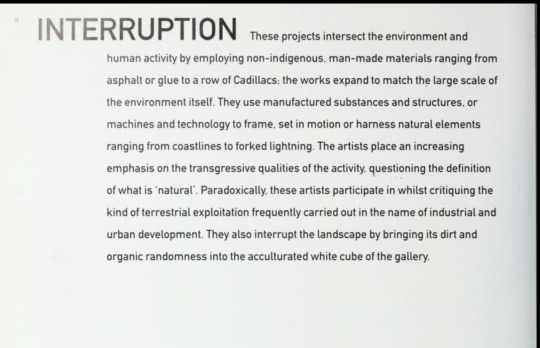
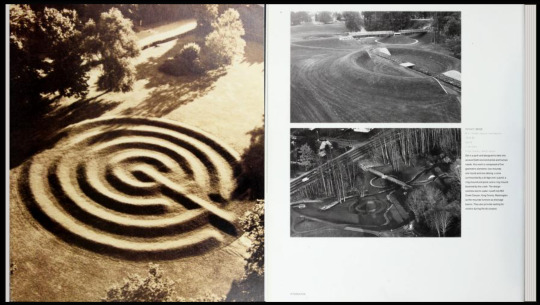
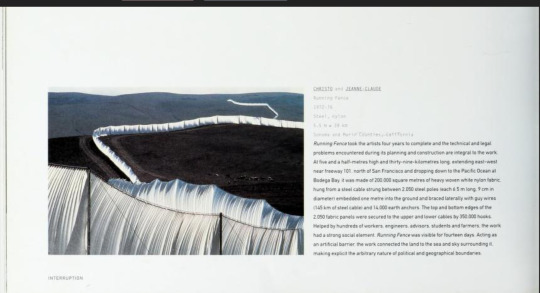

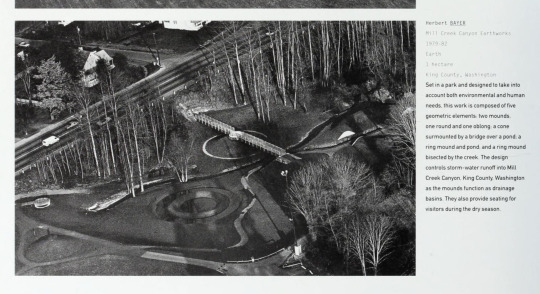
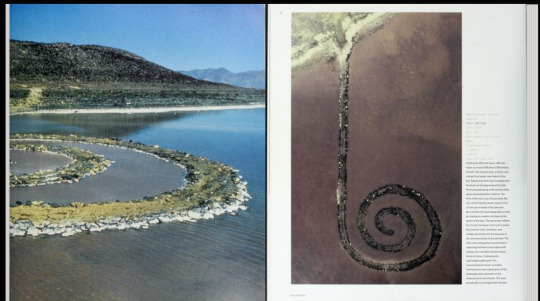
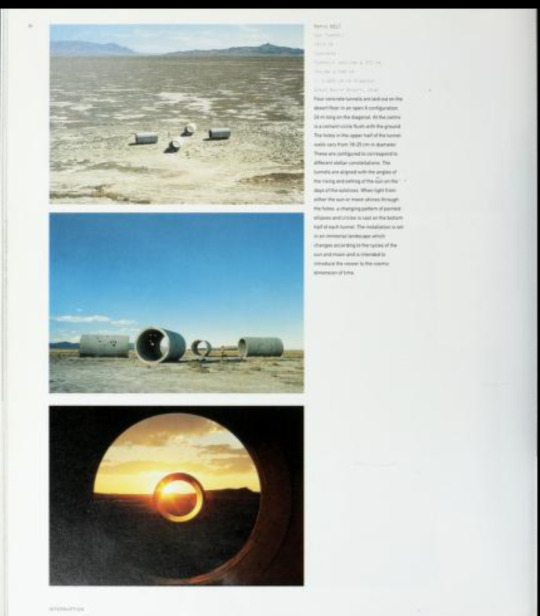
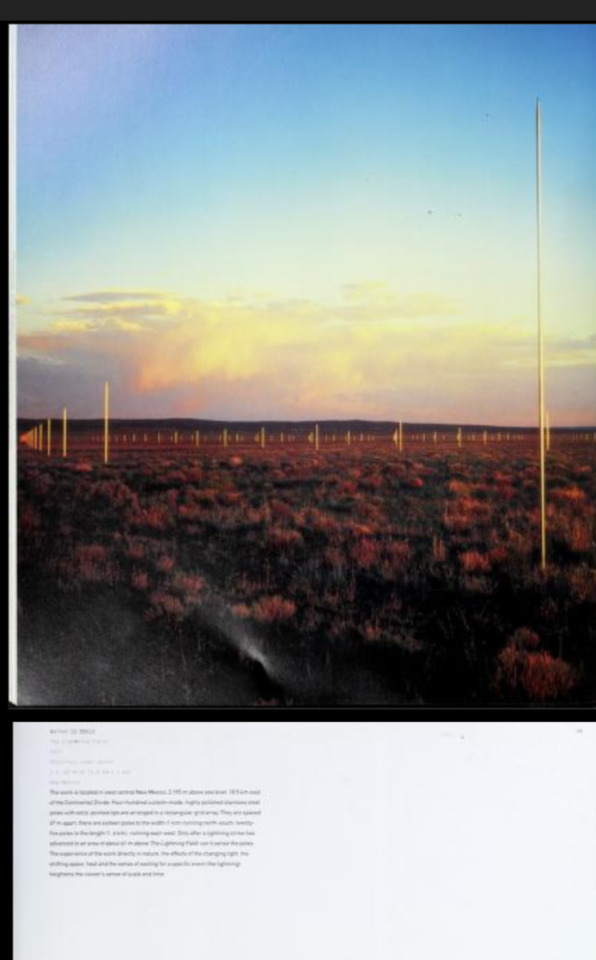
land and environmental art
0 notes
Text
land art as religion




screenshots from
“LAND ART, Earthworks,Installations,Environments,Sculpture
Williams Malpas
5 notes
·
View notes
Text



Psychogeography
San Diego bay jan 2022
#psychogeography#urban ecology#landscape art#artandscience#land art#solarpunk#green archive#desert#urbanexploration
8 notes
·
View notes
Text

Psychogeography
Observations in urban design and ecology
San Diego Bay, chula vista jan 2022
0 notes
Text




Green manifesto southeast arizona
1 note
·
View note

